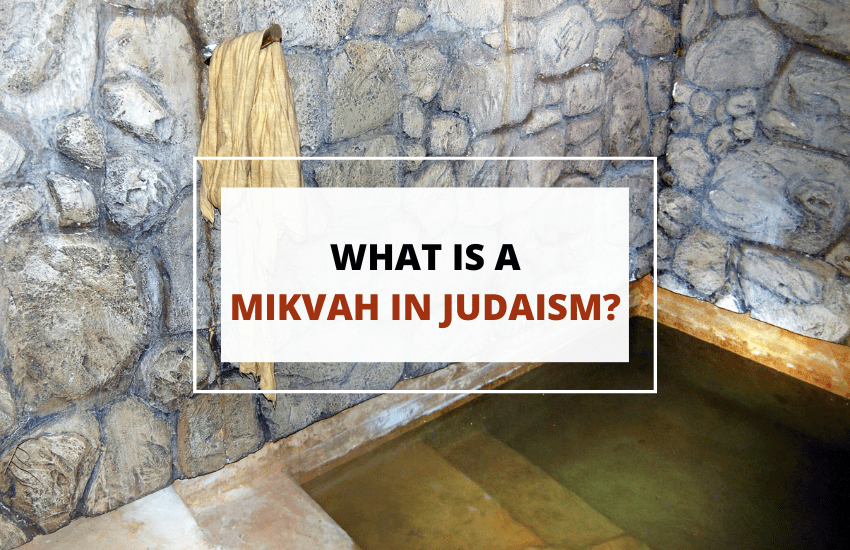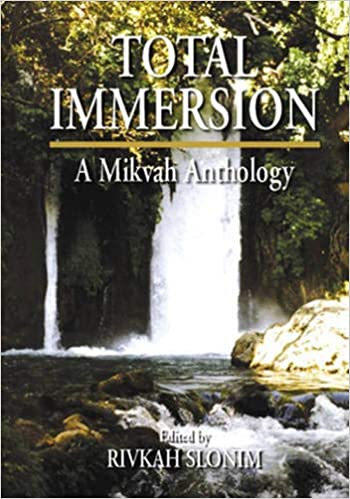
Table of Contents
A Mikvah or mikveh, as well as the plural mikvot, is a type of ritual bath in Judaism. The word quite literally means “a collection” in Hebrew, as in “a collection of water”.
This isn’t a bath like what you find in your home. What makes a mikvah special is that it must be connected to and filled directly from a natural water source such as a spring or a well. Even a lake or the ocean can be mikvot. The collection of water inside the mikvah can’t come from regular plumbing and it can’t be gathered rainwater.
All that relates to the specific use of mikvot – ritualistic cleansing.
History of the Mikvah
An interesting factoid about the mikvot is that the first one to ever be discovered was dated back to the first century BCE. For a religion as old as Judaism, that’s actually quite recent – just a century or so before Christ. The reason for that is because mikvot wasn’t really a part of the original Hebrew texts.
Instead, what was mentioned in the original texts was that believers were expected to bathe in actual spring waters and not in a man-made bath full of spring waters. So, for thousands of years, the followers of Judaism did just that and didn’t need or use mikvot as we know them today.
In other words, what the mikvah was really created for was convenience’s sake. As many practicing Jews will say, however, that shouldn’t distract from its spiritual purpose – whether in a created mikvah or in a literal spring out in the forests, the goal of bathing in natural spring water is the purification of the soul.
How is a Mikvah Used?

In AD 70, the Second Temple of Jerusalem was destroyed, and with this, many laws concerning ritual purity also lost their significance. Today, ritual bathing is not as prevalent as it used to be, but traditional Jews still observe the laws of the mikvah.
Before you enter a mikvah, it’s important to prepare for it. This includes removing all jewelry, clothes, beauty products, dirt under nails, and stray hairs. Then, after taking a cleansing shower, the participant will be able to enter and enjoy the mikvah.
Typically, a mikvah has seven steps leading into the water, symbolizing the seven days of creation. Once entering the mikvah, the participant immerses themselves completely in the water, then says a prayer, before submerging themselves two more times. Some participants say another prayer after the final immersion.
Who Uses a Mikvah?
While traditional Jews tend to feel that mikvahs should be reserved for Jews who observe the laws, some others feel that mikvahs should be open to anyone who wants to give it a try.
According to Hebrew law
- Jewish men sometimes bathe in a mikvah before Shabbat and before major holidays.
- Women should use the bathes before their wedding, after giving birth, and seven days after the end of their menstruation cycle. Traditionally, women were considered unclean or impure during their menstruation cycle and for seven days after. The mikvah restores the woman to a state of spiritual cleanliness and indicates that she is ready to bring in new life.
- New converts should also use a mikvah as they embrace the religion.
All of these practices were – and still are – so important for many religious Jews that mikvot were often the first thing to be built in new homes or in temples, and entire synagogues were sometimes sold to finance the building of a mikvah.
Wrapping Up
A mikvah is a fascinating tool for a religious practice that isn’t really surprising from a religion as old as Judaism. Bathing in spring water is something that many cultures and religions across the world have seen as purifying and cleansing, and so did the ancient people of Israel. From there, the idea of constructing a mikvah at home was one born out of practicality more than anything else.








